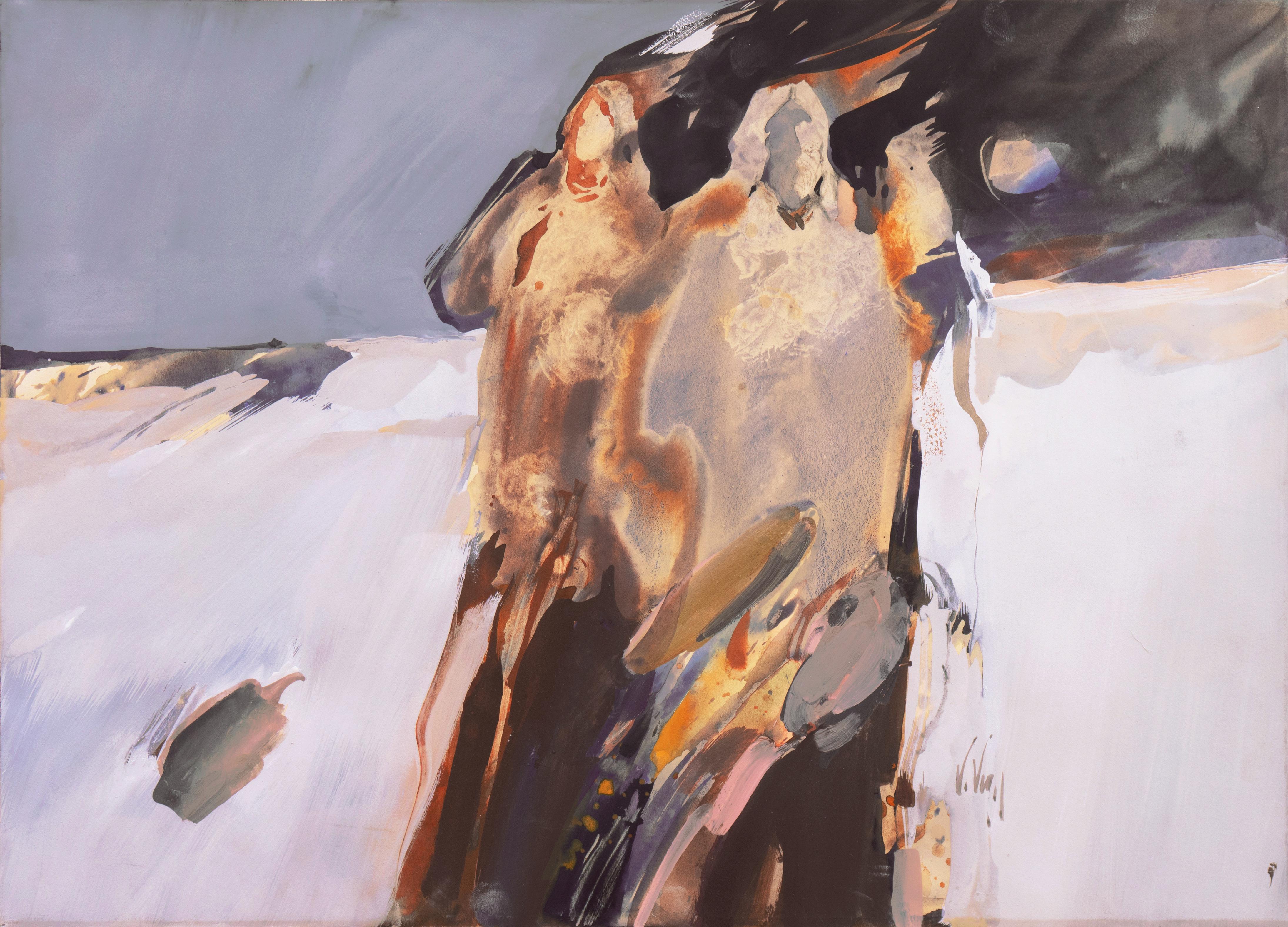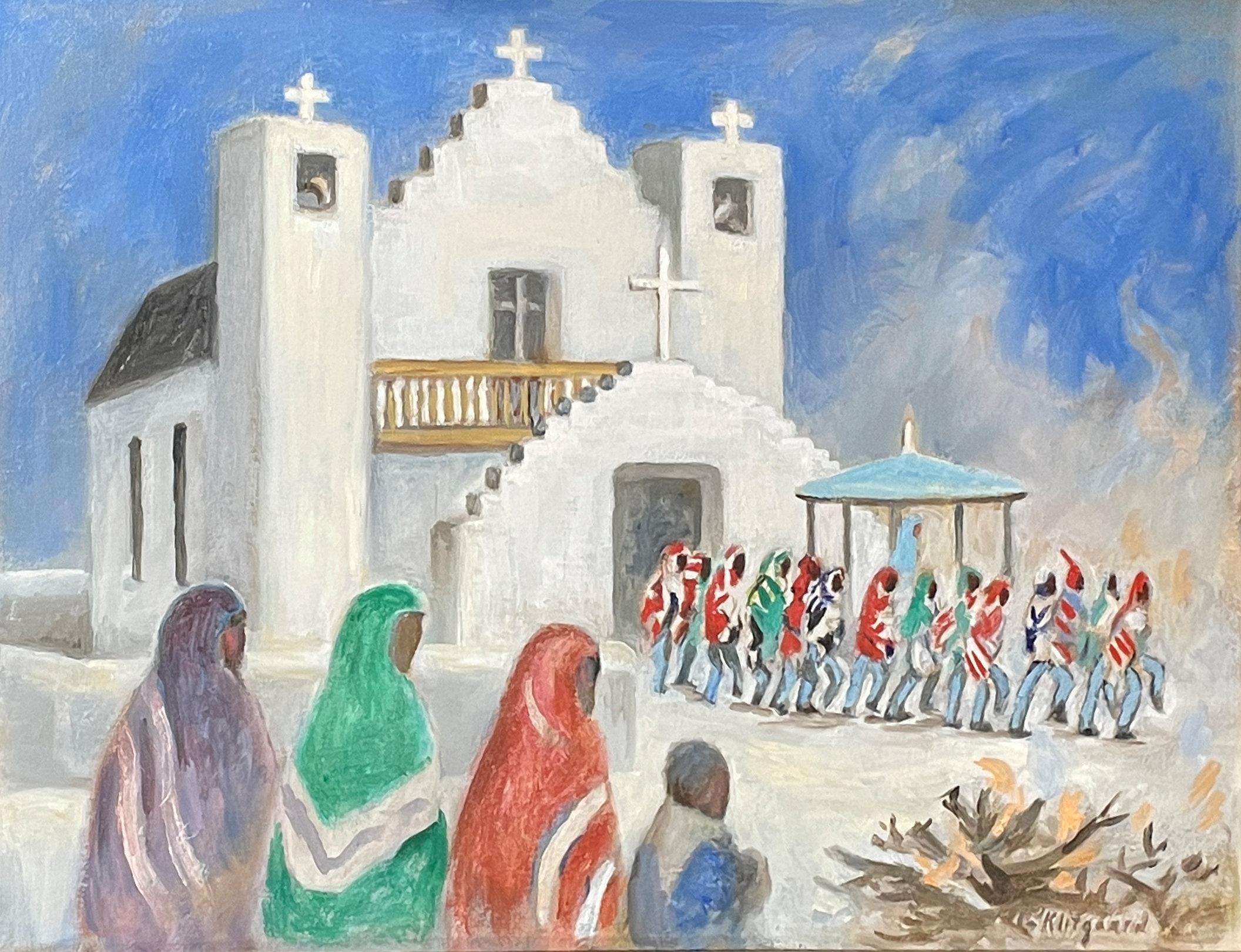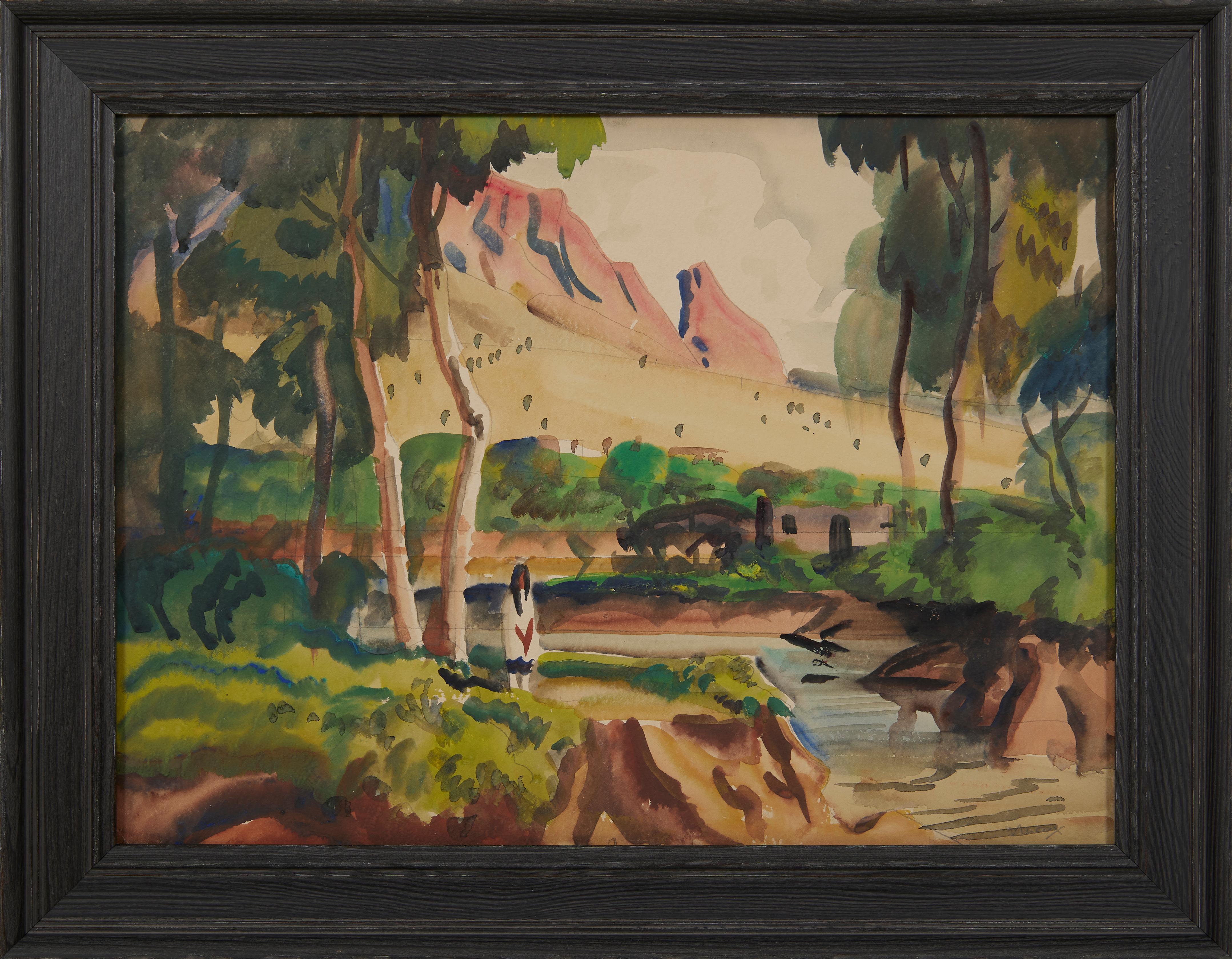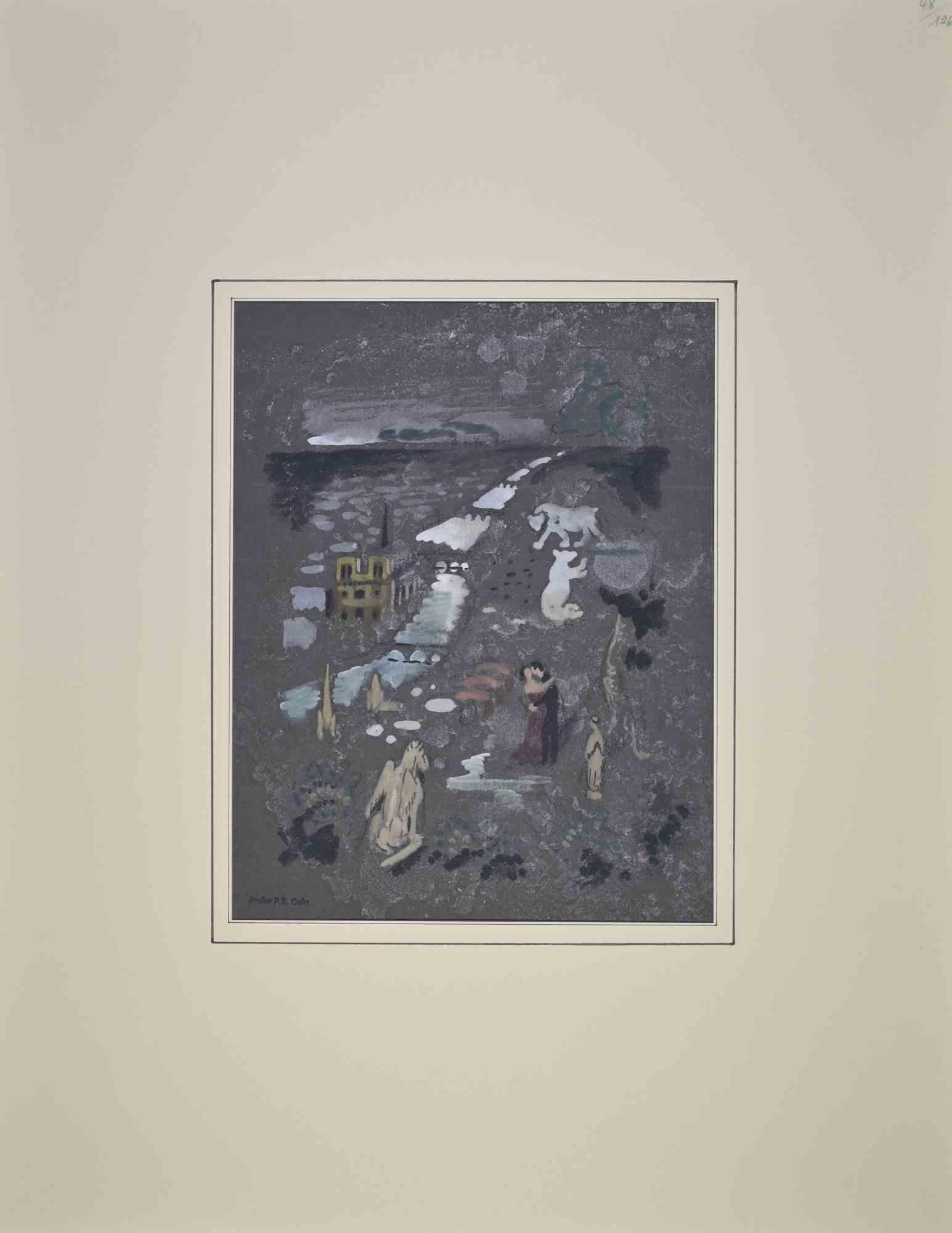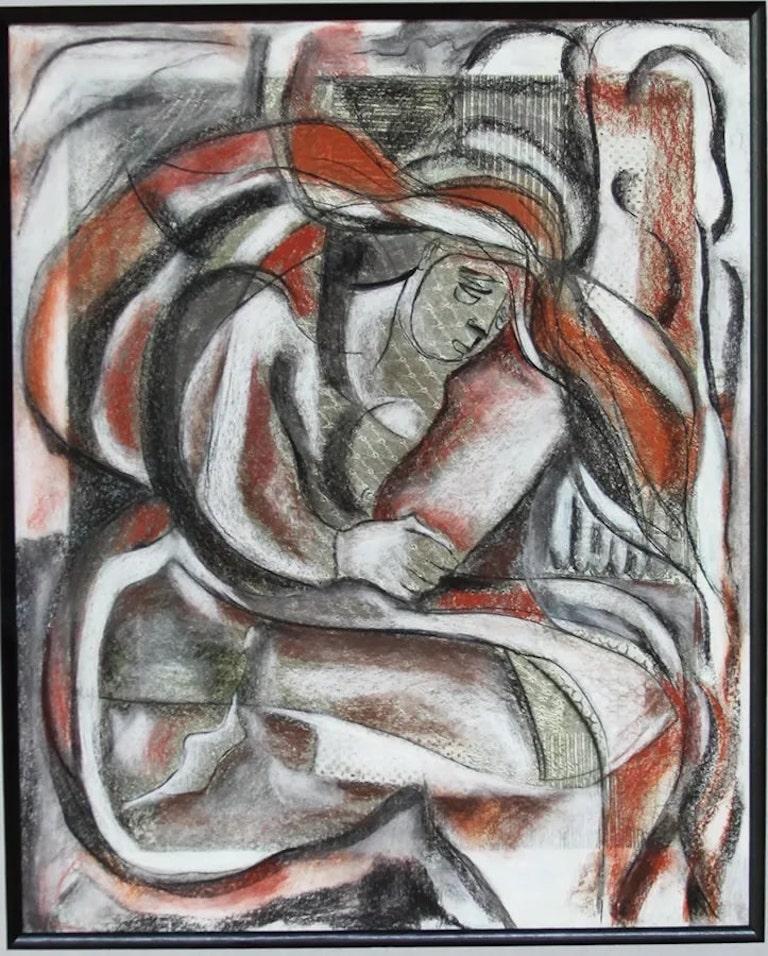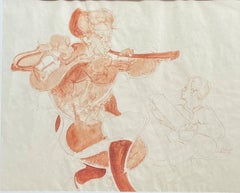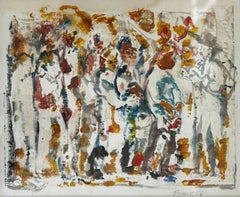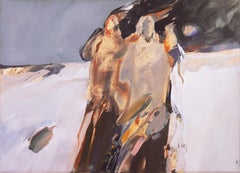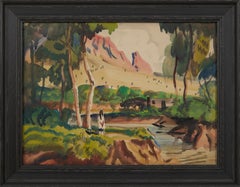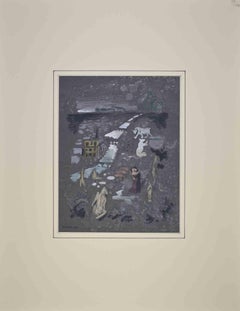Items Similar to "In Foreign Parts" Eugene Higgins, Southwestern Pueblo, Modern Figurative
Want more images or videos?
Request additional images or videos from the seller
1 of 10
Eugene Higgins"In Foreign Parts" Eugene Higgins, Southwestern Pueblo, Modern Figurativecirca 1910
circa 1910
$1,500
£1,137.65
€1,306.64
CA$2,148.96
A$2,365.84
CHF 1,209.19
MX$28,236.98
NOK 15,395.54
SEK 14,406.80
DKK 9,759.85
About the Item
Eugene Higgins
In Foreign Parts, circa 1913
Signed lower right
Watercolor on paper
Sight 17 x 13 inches
Born William Victor Higgins in 1884 to a Shelbyville, Indiana farm family where the only art Victor was aware of as a child was his father's love of flowers. "He loved their forms and their colors, and he tended his garden as a painter might work a canvas." At the age of nine, Victor met a young artist who traveled the Indiana countryside painting advertisements on the sides of barns. He purchased paints and brushes so the young Higgins could practice his own artwork on the inside of his father's barn. He also taught Victor about art museums and especially about the new Chicago Art Institute. This information never left the young artist, and he saved his allowance until his father allowed him at the age of fifteen to attend Chicago Art Institute. He worked a variety of jobs to finance his studies both there and at the Academy of Fine Arts.
Victor Higgins traveled to New York in 1908, where he met Robert Henri, who became a significant influence by depicting every-day scenes and stressing the importance of the spirit and sense of place as important factors in painting. Higgins was also greatly affected by the New York Armory Modernism Show of Marsden Hartley in 1913.
While Victor Higgins was in Chicago he met former mayor and avid collector Carter H. Harrison who was to prove instrumental in the growth of Higgins career for several years. Harrison agreed to support Higgins for four years to go to Paris and Munich and paint and study in the great museums in Europe. While at the Academie de la Grande Chaumier in Paris (1910-1914) he met Walter Ufer, who was another Chicago artist being sponsored by Carter Harrison. This meeting was not only a life-long friendship, but the beginning of a great change in the way Higgins looked at "American" art. He decided that America needed it's own authentic style rather than the 19th Century classic style he was taught in Europe. Very soon after returning to Chicago in 1914, Harrison sent him and Walter Ufer on a painting trip to Taos, New Mexico for a year in exchange for paintings. Higgins made other similar agreements and was able to support himself with his painting. This trip was a life-changing experience and introduced Higgins to the authentic America he had been looking for.
In 1914 Taos was an isolated village about twelve hours from Santa Fe on an impossible dirt road. But the colorful life of the pueblo people and the natural beauty drew a collection of artists who became the Taos art colony, from which the Taos Society of Artists was founded in 1915. Victor Higgins became a permanent resident within a year of his arrival and a member of the society in 1917, exhibiting with Jane Peterson in 1925 and with Wayman Adams and Janet Scudder in 1927. The members would travel around the country introducing the Southwest scenes with great success. He remained a member until the Society's dissolution in 1927. Higgins was the youngest member of the group of seven. Other members were Joseph Henry Sharp, Bert Phillips, Ernest Blumenschein, Oscar Berninghaus, Irving Couse and Walter Ufer.
His studies at the Royal Academy of Munich were at a time when a type of realism was encouraged by spontaneously reacting to the subject rather than preliminary drawing. Higgins was credited with bringing modernism to realism, which he practiced successfully as he sold his work in Chicago, Indianapolis, New York and occasionally to Europe during 1917-1919. He also changed his subject matter from the pueblo Indians to more experimental landscapes and even nudes (using local Native Americans as models). In 1918 Higgins was awarded the First Logan Prize at the Art Institute of Chicago and the First Altman Prize at the National Academy of Design, New York for "Fiesta Day". But there was controversy around the awarding of the prize because of the artist's stylistic approach to Native American subject matter that had been greatly idealized on canvas prior to this time. Possibly because of feeling that his audience missed the point, Victor Higgins concentrated for the next three decades on Impressionism, Cubism and Modernism. He continued to win awards at exhibitions in Luxembourg, France and the Venice Biennale. In 1921 he was elected to the National Academy.
The landscape became his primary focus with some still life and portrait work. Having met Dasburg and Marin in Taos, he experimented with multi-point perspective and interlocking planes. By the 1930s he had completely departed from his academic training and exhibited a strong cubist influence in his oil painting and the many watercolors he created.
Victor Higgins was married briefly to Sara Parsons (daughter of painter Sheldon Parsons) and to Marion Kooglen McNay of San Antonio, but the artwork seemed to be his primary relationship.
In the 1940s which became his final years, he painted a series of oils that he called "Little Gems". They were small landscapes which, in his three-piece suit, he painted from a setup in the trunk of his vehicle. Some of his friends including Ernest Blumenschein felt they were his best works ever. He was known to have commented, "This last group of pictures I shall never forget. In them was the best Higgins quality, a lyrical charm added to his lovely color...He always had, as do most good artists, an instinct that guided his form structure... And he put all he had into this dozen of small canvases...All works of love: love of his simple subjects and of his craftsmanship." Victor Higgins died in 1949, signaling to many the end of the Taos art colony as it had been.
- Creator:Eugene Higgins (1874 - 1958, American)
- Creation Year:circa 1910
- Dimensions:Height: 22.5 in (57.15 cm)Width: 18.5 in (46.99 cm)
- Medium:
- Movement & Style:
- Period:
- Condition:
- Gallery Location:New York, NY
- Reference Number:1stDibs: LU1841213339102
About the Seller
5.0
Platinum Seller
Premium sellers with a 4.7+ rating and 24-hour response times
Established in 2022
1stDibs seller since 2022
126 sales on 1stDibs
Typical response time: <1 hour
- ShippingRetrieving quote...Shipping from: New York, NY
- Return Policy
Authenticity Guarantee
In the unlikely event there’s an issue with an item’s authenticity, contact us within 1 year for a full refund. DetailsMoney-Back Guarantee
If your item is not as described, is damaged in transit, or does not arrive, contact us within 7 days for a full refund. Details24-Hour Cancellation
You have a 24-hour grace period in which to reconsider your purchase, with no questions asked.Vetted Professional Sellers
Our world-class sellers must adhere to strict standards for service and quality, maintaining the integrity of our listings.Price-Match Guarantee
If you find that a seller listed the same item for a lower price elsewhere, we’ll match it.Trusted Global Delivery
Our best-in-class carrier network provides specialized shipping options worldwide, including custom delivery.More From This Seller
View All"Pueblo Indians, Taos, New Mexico" Georgina Klitgaard, Modernist Figures
By Georgina Klitgaard
Located in New York, NY
Georgina Klitgaard
Pueblo Indians, Taos, New Mexico
Signed lower right
Oil on canvas
18 x 24 inches
Georgina Klitgaard’s art has sometimes gotten lost in the critical propensity to...
Category
Mid-20th Century American Modern Landscape Paintings
Materials
Canvas, Oil
"Pueblo Indians, Taos, New Mexico, " Georgia Klitgaard, Southwest Landscape
By Georgina Klitgaard
Located in New York, NY
Georgina Klitgaard
Pueblo Indians, Taos, New Mexico
Signed lower right
Oil on canvas
18 x 24 inches
Georgina Berrian was born in Spuyten Duyvil, New York in 1893. She was educated a...
Category
Mid-20th Century Modern Landscape Paintings
Materials
Canvas, Oil
$5,200 Sale Price
20% Off
"Figures, " Melecio Galvan, Modern Mexican Anti-War Artist, Social Justice
Located in New York, NY
Melecio Galvan (1945 - 1982)
Figures, 1968
Sepia on paper
18 x 22 inches
Signed and dated lower right
Provenance:
Estate of the artist
Melecio Galván (San Rafael, Mexico, 1945 - 1982) was a Mexican draughtsman who was little-known during his lifetime. This is principally because he was a socio-politically committed artist wary of the commercial gallery circuit as well as art institutions controlled by the state. He arose from a working-class family in San Rafael, on the outskirts of Mexico City, and died under mysterious circumstances in that town at the age of 37, just when he was reaching the apogee of his mature style. Galván studied at the Academia San Carlos in Mexico City between 1965 and 1968. His preferred medium was ink on paper, and he created page upon page of sketchbooks filled with drawings. The major themes he developed in his work were reinterpretations of classical drawings of the human figure and anatomy studies, explorations of the grotesque, and themes related to the socio-political situation in Mexico, especially following the 1968 Tlateloco Massacre. In 1971-72, he traveled to Northern California where he collaborated on a mural in Fresno and created illustrations for the Latino journal Basta Ya (Enough Already) in San Francisco. Back in Mexico City, from 1977 to 1981 he was a member of the Grupo MIRA, primarily comprised of printmakers who favored themes of politics and social justice...
Category
1960s Figurative Drawings and Watercolors
Materials
Paper, Pigment
"The Gathering" Theresa Bernstein, Abstracted Figures Ashcan School Artist
By Theresa Bernstein
Located in New York, NY
Theresa Bernstein
The Gathering, circa 1990
Signed lower right
Mixed media on paper
9 x 10 3/4 inches
Theresa F. Bernstein was born in Philadelphia in 1895 to cultured, middle-clas...
Category
1990s Abstract Abstract Drawings and Watercolors
Materials
Paper, Mixed Media
"Untitled" Theresa Bernstein, Expressionist Work by American Ashcan Artist
By Theresa Bernstein
Located in New York, NY
Theresa Bernstein
Untitled, circa 1990
Signed lower right
Oil on canvas
16 x 20 inches
Theresa F. Bernstein was born in Philadelphia in 1895 to cultured, middle-class immigrant par...
Category
1990s Abstract Abstract Paintings
Materials
Canvas, Oil
"18 Cornelia Street" George Morrison, Ojibwe Native Artist, Modernist Work
By George Morrison
Located in New York, NY
George Morrison
18 Cornelia Street, 1944
Signed and dated "May 1944" lower left
Ink on paper
8 1/4 x 5 1/4 inches
Provenance
The artist
Carl Ashby
Estate of the above
Private Collec...
Category
1940s American Modern Figurative Drawings and Watercolors
Materials
Paper, Ink
You May Also Like
'Native American Figurative Abstraction', Pueblo Indian Expressionism, Palo Alto
Located in Santa Cruz, CA
Signed lower right, 'V. Vigil' for Veloy Vigil (American, 1931-1997).
Previously with: Los Robles Gallery, Palo Alto, California
Born in Denver, Colorado,...
Category
1970s Figurative Drawings and Watercolors
Materials
Paper, Gouache
Juan San Miguel Allende
Located in Toronto, ON
11" x 6.5" Unframed
Original - Watercolour
Hand Signed by Joe Lasker
1948
Lasker painted this piece in 1948, while he was staying at San Miguel de Allende, Mexico,
where he used to ...
Category
1940s Figurative Drawings and Watercolors
Materials
Watercolor
At Isleta, New Mexico Western Landscape Painting, 20th Century Cleveland School
By Frank Wilcox
Located in Beachwood, OH
Frank Nelson Wilcox (American, 1887–1964)
At Isleta, New Mexico, c. 1937
Watercolor on paper
Signed lower right, titled verso
15 x 20 inches
Frank Nelson Wilcox (October 3, 1887 – A...
Category
1930s Figurative Drawings and Watercolors
Materials
Watercolor
Composition - Drawing by Paul Emile Colin - Mid-20th Century
Located in Roma, IT
Composition is an drawing realized in the Mid-20th Century.
Tempera on paper.
Good condition.
Monogramme.
Category
Mid-20th Century Modern Figurative Drawings and Watercolors
Materials
Watercolor
Expressionist Figurative Painting, "Alone"
Located in San Diego, CA
This is a one of a kind original expressionist figurative drawing by Southern California artist, Lenore Simon. It is framed as pictured. Its framed dimensions are 26.45" x 30.6". A c...
Category
2010s Expressionist Figurative Drawings and Watercolors
Materials
Conté, Charcoal
Holy Scene - Mixed Media Drawing by E. Baumgart - Late 20th Century
Located in Roma, IT
Holy Scene is a modern artwork realized by E. Baumgart.
Mixed media (ink, tempera and watercolor) on cardboard.
Hand signed on the left margin.
Includes frame: 33 x 29 cm
Category
Late 20th Century Contemporary Figurative Drawings and Watercolors
Materials
Watercolor, Mixed Media
More Ways To Browse
Southwestern Art
Pueblo Art
19th Century Mexican Oil Paintings
Preliminary Drawings
Paintings Of Barns
The Group Of Seven
Southwestern Paintings
Pueblo Painting
Taos Society Of Artists
Nude Native
Southwestern Watercolor Paintings
Walter Ufer
Victor Higgins
Bert Phillips
Sheldon Parsons
Golf Watercolor Art
Hirschfeld Ink
Mermaid Drawing
